Shaping a round and toned booty is a task for all athletes, not stereotypically female. And the task of getting strong glutes is harder than you think. It’s not about a hundred squats, after all.
The glutes (buttocks) consist of three muscles
- gluteus maxius
- gluteus medius
- gluteus minimus
(plus tensor fasciae latae muscles)
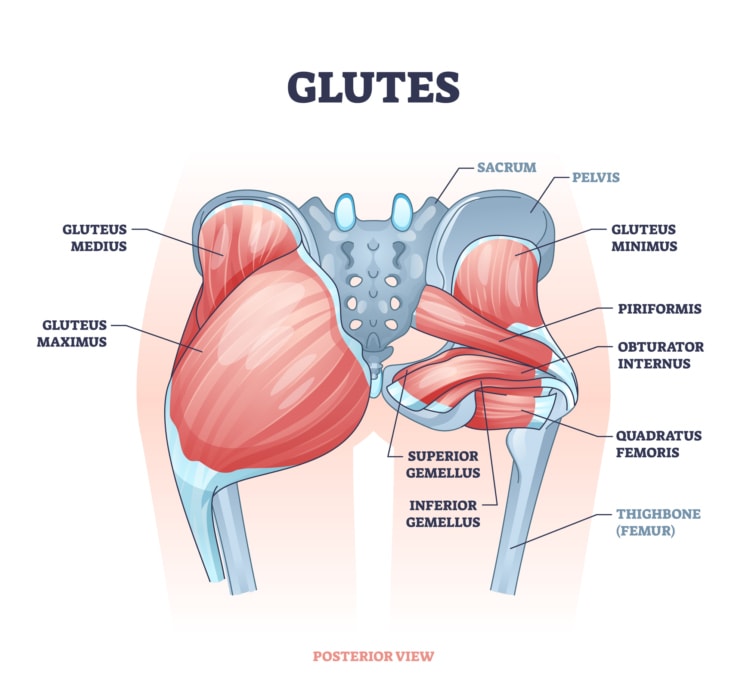
While the gluteus maximus is the biggest muscle in the area (and your whole body), the gluteus medius is just as important for training. This is the muscle that makes the booty look rounder and perkier. Although only one-third of the gluteus medius is uncovered from beneath the gluteus maximus, strengthening the muscle sort of “lifts up” the booty.
The Gluteus medius is a hip abductor muscle situated on the upper and outer part of the buttocks. This posterior muscle is responsible for high abduction, and internal and external rotation. For the most part, the gluteus medius performs these two movements with the help of the gluteus minimus, located beneath the two bigger muscles of the region.
Unfortunately, our modern sedentary lives affect the glutes in the least desirable way. Weakened muscles of the butt have consequences beyond aesthetics. A weak gluteus medius, for example, affects lower body stability and increases the risk of injury.
To strengthen the muscle, you should mainly focus on the abductive (lateral) and rotating movements. Overall, the gluteus medius also serves as an auxiliary stabilizing muscle in most glute exercises, but the following eleven exercises focus mainly on this smaller muscle.
Glute Bridge Exercises for a Firm Peach
What Weakens Gluteus Medius?
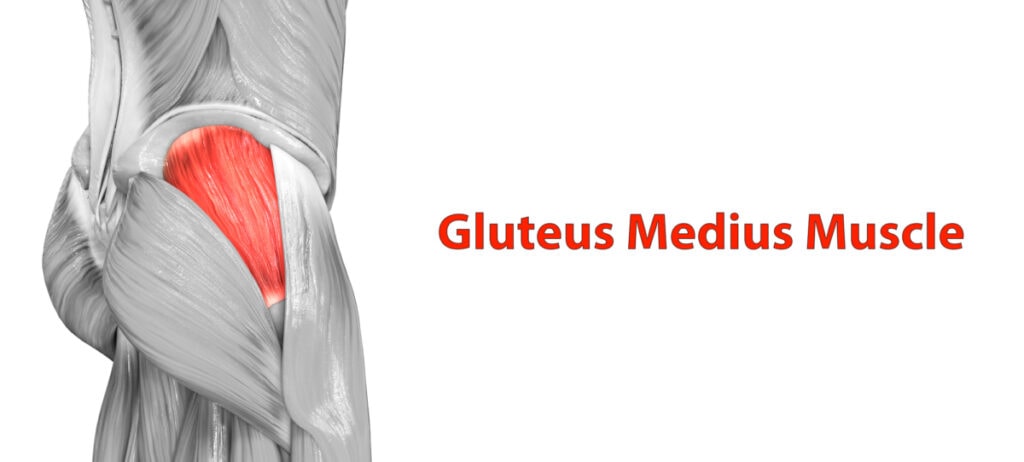
Aside from the general sedentary lifestyle that weakens our whole bodies, a few things lead to weak gluteus medius.
One of the most important of them is sitting crosslegged. Your glutes are stretched in this position, and the weight transfers to one side. As a result, you lose the balance in muscles and weaken them.
Similarly, any case of putting the whole weight on one side/leg for too long brings such imbalances to upper glutes as well. It’s even (effective) for sleeping on one side. Thus, it’s better to switch up regularly.
What are the Benefits of Strengtening Gluteus Medius?
Gluteus medius workouts can drastically enhance the aesthetics of your buttocks, yes. But there are more benefits to it than the looks. When it comes to stronger glutes, we are also speaking of health benefits.
Reduces Lower Back and Knee Pain
Strong gluteus medius stabilizes the whole body and makes your movement more powerful and efficient. As you strengthen the body’s primary “stability” muscles, you reduce the risk of injuries and rebalance the strain to the correct muscles. Thus, your lower back and knees are not put under excessive pressure, which often happens with weak glute muscles.
Decreased Risk of Patellofemoral Pain Syndrome
A 2020 study published in the American Journal of Physical Medicine & Rehabilitation found the connection between gluteus medius muscle asymmetry and the patellofemoral pain syndrome. The condition is also expressed through knee pain due to the damaged kneecap cartilage.
Among patellofemoral pain syndrome participants, the magnitude of asymmetry of gluteus medius muscle activation was correlated with knee pain score.
Patellofemoral Pain Syndrome and Pain Severity Is Associated With Asymmetry of Gluteus Medius Muscle Activation Measured Via Ultrasound
Faster Running/Higher Resistance
As mentioned before, gluteus medius stabilizes the lower body and makes your movement stronger and more efficient. Athleticswise, strong gluteus medius means faster running and the ability to power through heavier weights. And this only multiplies the efforts on building stronger glutes.
How Long Does It Take for Your Butt to Grow?
What Exercises Strengthen Gluteus Medius?
For this glute muscle, the focus should remain on lateral and rotational movements. The former, of course, requires more range. Rotation movements and exercises are subtle in their nature. Yet, they are just as effective.
Curtsy lunges
This is a staple movement of the training gluteus medius. Lunges overall are an essential part of any lower body training session. And while the regular lunges are targeted more on the gluteus maximus, the curtsy lunges engage the smaller muscle better. This is the best type of lunges to engage medius and minimus muscles.
Muscles worked:
- quadriceps (rectus femoris, vastus intermedius, vastus medialis, and the vastus lateralis)
- glutes (gluteus maximus, medius, and minimus)
Secondary muscles:
- calves (soleus and the gastrocnemius)
How to Do:
- Stand upright with feet shoulder-width apart. Take a dumbbell in each hand if needed.
- Move left leg behind and diagonally to the right side.
- Bend the knees and lower till the left knee almost touches the ground. Make sure the front doesn’t go beyond your toes.
- Return to the starting position. Repeat 8-12 reps or alternate between legs as needed.
Tip: In this exercise and all the rest exercises on the list, keep your neck neutral. It’s easy to forget such a minor detail but it’s an important rule of injury prevention.
Banded Clamshell

The clamshell seems like an easy pilates exercise that is rather strange and all. But, in reality, when adding resistance bands to the mix, you get one effective exercise that will make your gluteus medius burn!
Muscles worked:
- gluteus maximus
- gluteus medius
How to Do:
- Lie on your left side. Your whole body is straight. Resistance bands slightly above the knees.
- Bend the knees to 45 degrees and bring them in front of the body. Keep your heels together.
- “Open up” your right leg rotating the hip to the side. Complete the full range of motion without rotating your hips.
- Repeat 8-12 times and switch to the other side.
Barbell Hip Thrust
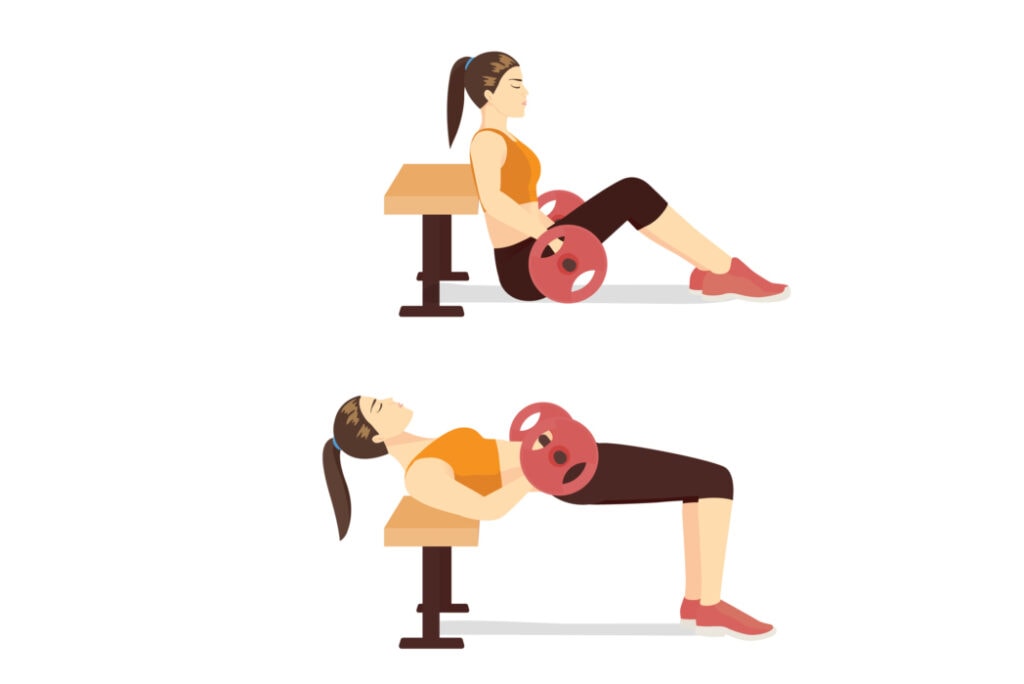
A hip thrust is known to be one of the most effective exercises for building toned glutes. It targets all gluteus muscle groups. This compound movement is a powerful thrust that can be loaded with rather heavy weights. The perfect range for glutes hypertrophy (required to build bigger glutes) is anywhere between 6 to 30 reps. However, the most efficient count lies under 12 reps.
This exercise is rather similar to the glute bridge, but it targets hamstrings more than quads due to additional elevation.
Muscles Worked:
Glutes (gluteus maximus and medius)
Secondary muscles
- quadriceps
- hamstrings
- hip adductors
- core
How to do:
- Get near a sturdy bench. Rest your shoulder blades on the bench, knees bent, and feet on the ground. Keep your feet hip-width apart. A barbell should lie on your hips. (or any other type of weights you have at home)
- Anchor through your heels and raise your glutes up to form a straight line from shoulders to knees. Knees bent at around 90 degrees. Tuck your pelvis in at the top to put the load on the glutes. Your chin tucked.
- Hold for a second and lower to the starting position. Repeat 8-12 times.
How to Do Glute Kickbacks (Variations and Muscles Worked)
Banded (Cable) Hip Extension
This exercise can be done both at the gym and at home with a few minor tweaks. At home, use a resistance band. Attach it either to a sturdy surface or your non-working leg. In the gym, use the cable pulley machine. Attach the low cable ankle strap. Both types engage the same muscles and can be just as effective.
Muscles Worked:
- gluteus maximus
- gluteus medius
Secondary muscles
- hamstrings
How to Do:
- Attach a resistance band or an ankle strap to the cable machine. Stand straight, feet together.
- Hold something sturdy in front of you and bend your torso forward slightly.
- Keep your hips stable, and extend your working leg diagonally to the back. Adjust the angle as needed to feel the burn in your upper butt.
- Return your leg to the starting position.
- Repeat 8-12 times and switch legs.
Banded Fire Hydrant

Fire Hydrant is another weird-looking floor exercise for glutes that can strengthen your gluteus medius drastically if adding a tight resistance band. This exercise works for the whole gluteus muscle group.
Muscles worked
- gluteus maximus
- gluteus medius
- gluteus minimus
- hip abductors
Secondary muscles
- core
How to Do:
- Place a band above your knees. Stand on your hands and knees. (Put something to soften the burden on your knees)
- While keeping your back straight, bring your bent leg up laterally. Keep the knee at 90 degrees. Bring your leg as high as you can without rotating your hips. Back straight.
- Hold at the top for a second and lower your leg to the starting position.
- Repeat 8-12 times and switch sides.
Side Plank With Abduction
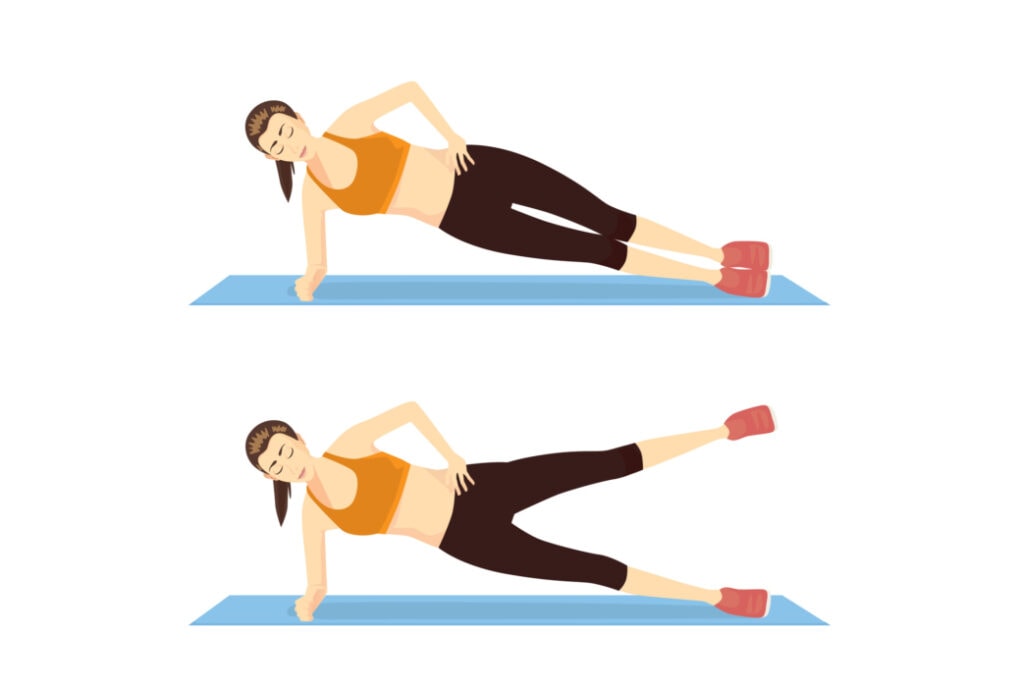
This is one of the most challenging exercises on the list. The dominant engagement of the core determines its difficulty. Any plank is a challenging competition for beginners. A side plank more so. If you find it hard to complete the task as required, switch to a plank on the knees.
This is one of the few exercises with the highest gluteus medius activation. Both the side plank and the hip abduction are on their own. Combined, they kick-start your glute burn to the max.
Muscles Worked:
- tensor fasciae latae,
- gluteus medius,
- gluteus minimus,
- core
How to Do:
- Start in a side plank position. (You can also modify it by anchoring through the knees). Your elbow beneath your shoulder. Feet stacked one on another. Put on a resistance band if needed.
- Keep your whole body engaged. Raise the upper leg to around 75 degrees.
- Hold at the top for a second and lower your leg.
- Repeat 8-12 times and switch the sides.
Single-Leg Squat
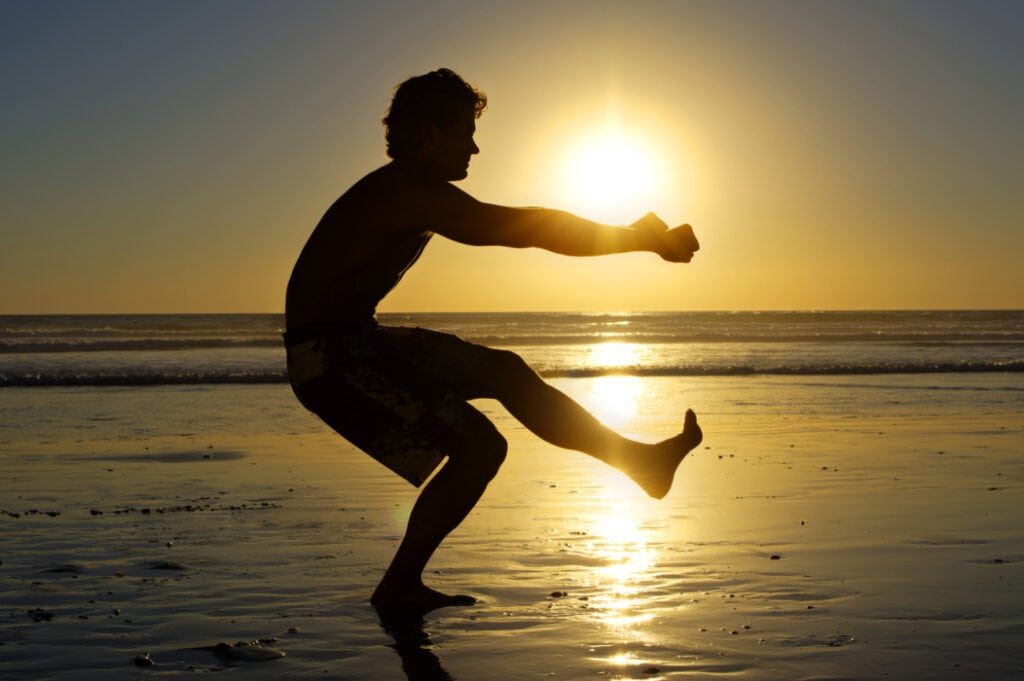
This is where THE SQUAT comes into play. Finally, the favorite exercise of all! Many love squats for building glutes. And while it’s not THE most effective exercise, it’s definitely a must-have in any lower body split.
However, if you require a squat and want to enhance your gluteus medius, a single-leg squat should be your optimal choice. As unilateral-focused movements are known to weaken the muscle, the exercises that aim to load both sides are all the more effective for better balance.
Muscles Worked:
- glutes
- calves
- shins
- thighs
- abdominals
Many people also know it as a pistol squat, which is, fairly, the advanced version of the single-legged squat. It’s tough to accomplish for beginners. However, for advanced athletes, such movement really strengthens the body.
This movement was proven to be safer for people with low back pain compared to regular squats. Plus, it improves your balance drastically and enhances upper glutes.
How to Do:
- Stand in the upright position, feet placed together. Raise the “free” leg up and then front and hold it in this position.
- Find your balance and slightly bend the knee of the working leg.
- Squat on one leg down. Ideally, all the way to touch your heel. This would be the pistol squat. However, beginners should aim for at least 90 degrees or place a chair and try to sit on it during the move.
- Hold your core strong, push through the heel and raise to the starting position.
- Repeat on the same leg and switch sides.
Single-Leg Deadlift
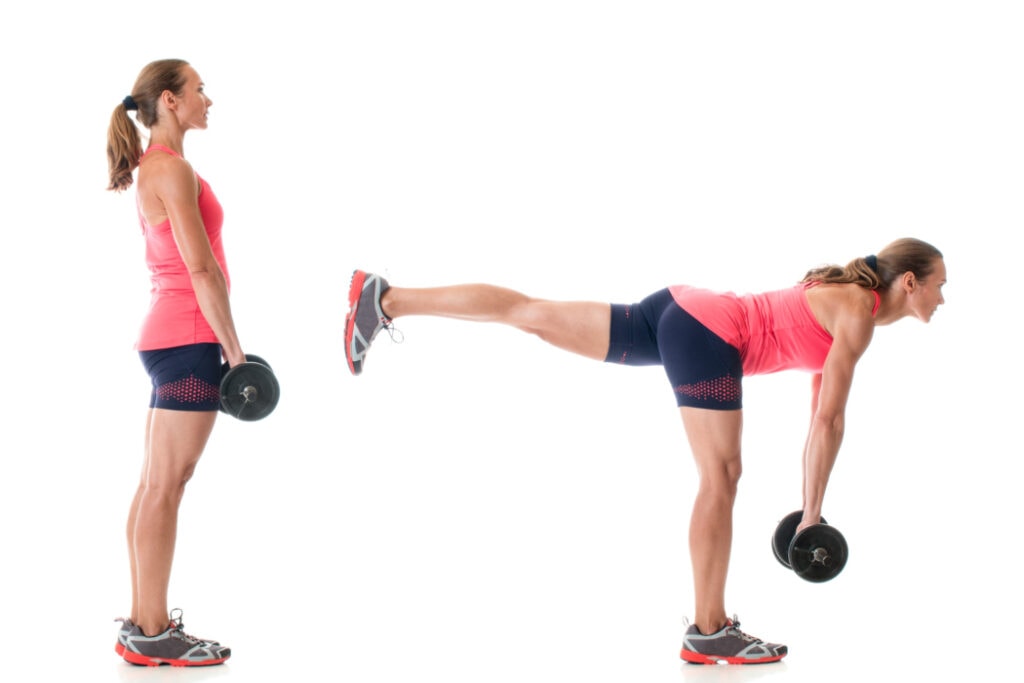
Another single-leg exercise to add to your glutes workout. While the regular deadlift targets mainly the gluteus maximus, the gluteus medius is responsible for one-sided movements. Thus, it’s engaged in this kind of deadlift move more profoundly. So, if you want your upper butt to become more toned, I suggest this variant of the Romanian deadlift. The added bonus corresponds with the previous exercise – balance enhancement.
Muscles Worked:
- gluteus maximus
- gluteus medius
- hamstrings
- ankles
- core
How to do:
- Stand straight with feet close together. Take a dumbbell in both hands.
- Bend the knees slightly and shift the weight to the left leg.
- Start hinging your hips as in the regular deadlift, plus drive your right foot back and up. Try to lower your torso parallel to the floor. However, if your flexibility doesn’t allow that, stop when your hips are not hinging anymore. Do not rotate your hips.
- Raise back to the starting position.
- Repeat 8-12 times and switch legs.
11 Best Butt Exercises to Do at Home
Lateral Step-up
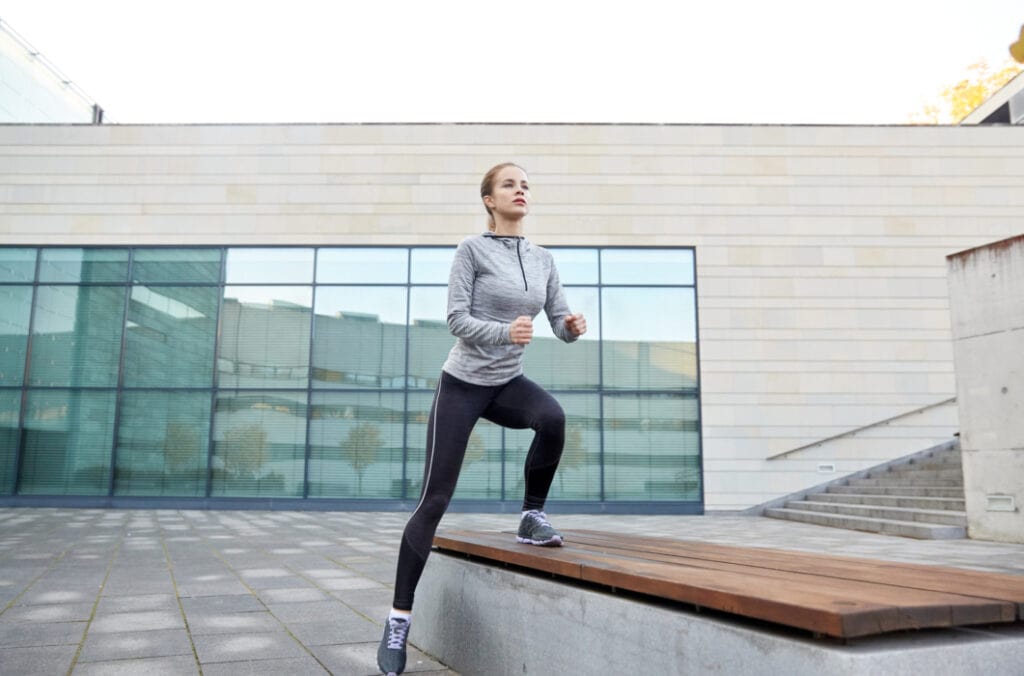
We still remember that gluteus medius is most effective trained via abduction movements, right? This is where lateral steps come into play. These particular muscles are more effective than the regular steps. This unilateral movement is often used to balance out all imbalanced, and it trains coordination as well.
Muscles Worked:
- gluteus maximus
- erector spinae
Stabilizers
- gluteus medius
- gluteus minimus
- quadratus lumborum
- obliques
- hamstrings
- gastrocnemius
How to Do:
- Stand on the side of a bench or a box. Place the closest feet on the bench/box.
- Engage your core, drive through the elevated leg and raise on it. Be sure to drive all the force through the higher leg.
- Step back to the ground with the “resting” leg.
Monster Walk
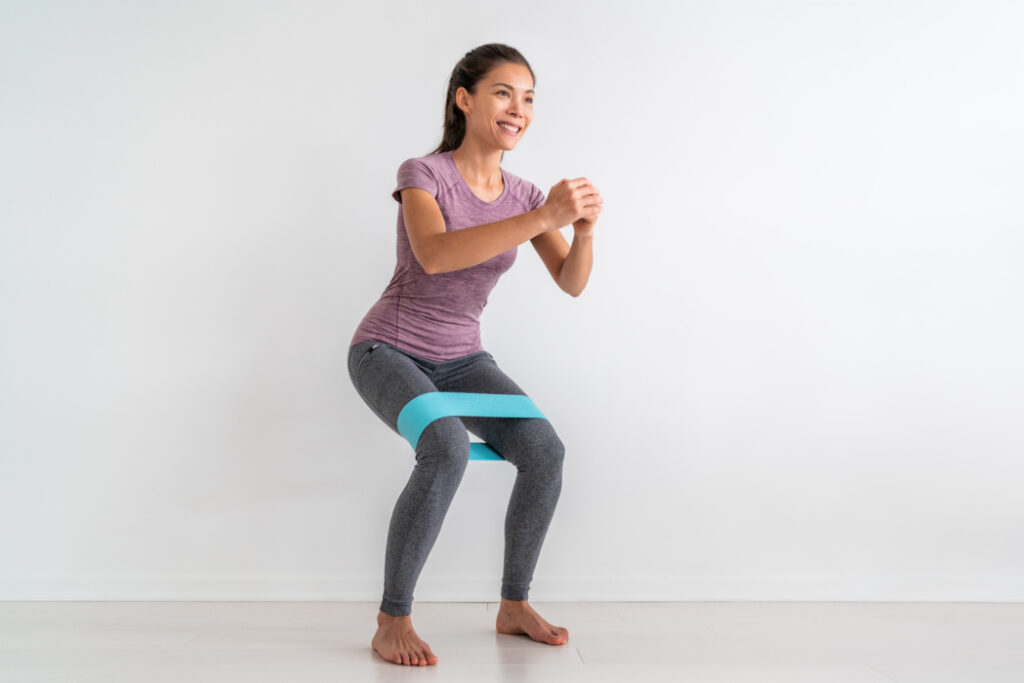
Let’s return to our bands for a bit, okay? Resistance bands are your best helpers when it comes to building gluteus medius at home.
This exercise may seem too easy compared to the single-leg or the weighted ones. However, it is rather effective in practice.
The exercise is known as a Monster walk among fitness enthusiasts because of its uncanny resemblance to otherwordly movements. You’ll see! It’s used to tone the upper butt and hips.
Muscles Worked:
- gluteus maximus
- gluteus medius
- gluteus minimus
- hip flexors
- inner thighs
- outer thighs
How to Do:
- Place a resistance band slightly above your knees. Stand up with feet shoulder-width apart or wider.
- Hinge your hips, move the bum back, and squat. Do not go as low as 90 degrees; slightly less – around 45.
- Remain in the squat position with a straight back. Move one foot diagonally outwards as you step forward. Remain in the squat position!
- Step diagonally forward with the opposite leg. Repeat the steps with each leg around 15 times.
Tip: to relocate the most tension from tensor fasciae latae to gluteus medius, keep the squatting angles low, around 30 degrees, no more than 45. Do not lead with the weaker hip as well.
Leg Circles
The last exercise is a great compound finisher to your glutes workout. It targets all three main muscles of the area. Your booty will burn if you finish with leg circles. Plus, it’s done lying on the floor! What can be a better finisher?
Muscles Worked:
- gluteus maximus
- gluteus medius
- gluteus minimus
- inner thighs
- outer thighs
How to Do:
- Lie on your left side on the floor. Straight from head to toes. You can place your left arm under the head for comfort. Also, place the resistance band for added engagement.
- Raise your straight right leg up at around 45 degrees. It may be lower depending on your flexibility.
- Draw imaginary circles with your right leg. Keep it straight and increase the range of motion to your max. Important – keep from rotating your hips! Lie straight on your back.
- Keep circling it for around 30-40 seconds. Switch legs.
Why Yoga Is Good? 5 Unique Yoga Benefits Proved with Your Anatomy
In Conclusion
These 11 exercises (plus their slight variations) will train gluteus medius to the max. If you want a rounder and more lifted upper butt, this is the muscle you should focus on. But, remember, a healthy body is a well-rounded body; meaning, don’t focus on one muscle (or muscle group) over all the rest. Keeping all your muscles strong and toned is more important!
Plus, glutes are a large muscle group, trained alongside such “giants” as hamstrings and quads. Big muscles require more rest. Be sure to incorporate weighted leg days no more than three times a week to give them proper rest.
A round and toned butt is a combined accomplishment of all three gluteus muscles plus toned hamstrings. Incorporate targeted gluteus medius exercises in moderation and with proper rest!
 Fact checked by
Fact checked by